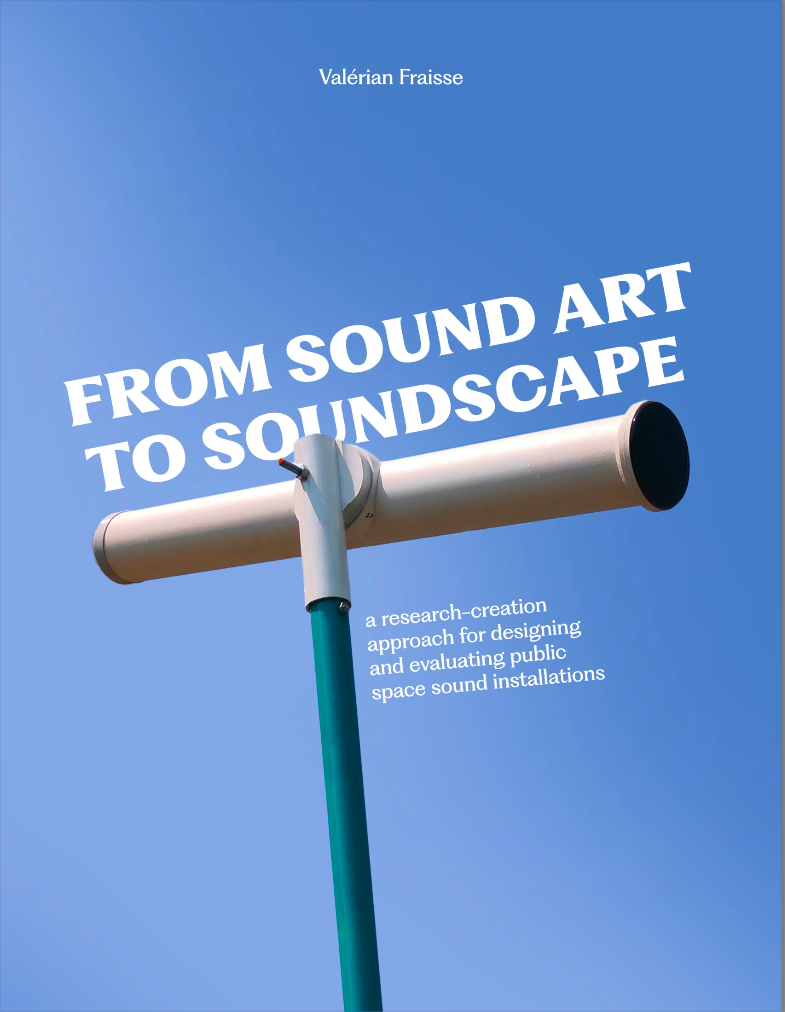Authors:
Valérian FraissePublication or Conference Title:
Ph.D. Thesis, McGill University/Sorbonne UniversityAbstract:
Artistic expression through sound has always been a part of urban life, from street music
to more recent sound installations. These forms of creation remind us that sound is not
just a byproduct of the urban metabolism, but a resource with both negative and positive
consequences. The soundscape approach seeks to address this complex reality through a
human-centered approach to sound, from a design perspective. While this approach is
well-established in research, the implementation of soundscape practices in urban design
remains scarce. In particular, there seems to have been little attempt to provide methods
derived from soundscape research to assist sound artists in the design of public space
sound installations, and only a few studies have focused on the impact of such works on
urban soundscapes. More research is needed to better understand the relationship
between sound installation design and its effects on soundscape while providing artists
with the resources to systematically assess the impact of their work before and
after deployment.
To help fill this gap, this dissertation investigates the auditory experience of public space
users in the presence of sound art with mixed methods approaches combining surveys,
acoustic measurements, and interviews, on-site or in laboratory settings. The first chapter
of this dissertation focuses on a field study about the design and evaluation of four
temporary sound installations deployed in a small urban public space in Montreal,
Canada. All four sound installations improved the public space’s soundscape, with
communalities and specificities related to compositional and contextual factors. The
second chapter presents a laboratory study to inform the design of a permanent sound
installation that will be deployed in a larger public space in Paris, France, using a
soundscape simulation tool designed for this purpose. Results validated the simulation
tool and indicated three components relevant to evaluating sound installations:
pleasantness, familiarity, and variety. Otherwise, the effects of the installation on
familiarity and variety were stronger when composition sketches involved abstract
sounds (sounds that were not clearly identifiable). The third chapter involves the
laboratory evaluation of another permanent sound installation involving sounds
evocative of the sea, currently deployed in a small urban public space in Montreal. Results
indicate that some natural sounds can benefit the pre-existing soundscape, but a
compromise has to be found between evocativeness and congruence: the most evocative
sounds were also perceived as least pleasant because incongruent.
This dissertation provides theoretical, methodological, and practical contributions. The
studies allowed us to investigate the relationship between the nature of a composition and
its impact on soundscape while questioning the addition of generic sound sources—such
as birdsongs and water stream sounds—as a blanket solution. In addition, these studies
led to the development of a replicable and flexible methodology for the design of public
space sound installations, in the form of a four-stage research-creation collaboration
framework. Methodological tools were proposed for each of these stages, including a
sound-level analysis tool, a soundscape simulation tool, and a questionnaire instrument.
Finally, the collaborations provided invaluable data to the sound artists in their creative
process and constituted a way to promote their work to public stakeholders.
Publication Details:
Type: |
Ph.D. Dissertation |
Date: |
12/13/2024 |
Pages: |
207 |
Publisher: |
McGill University/Sorbonne University |
Location: |
Montreal, Qc, Canada/Paris, France |
IDMIL Participants:
Additional Information:
Fraisse_PhD_Dissertation_2024_rev

